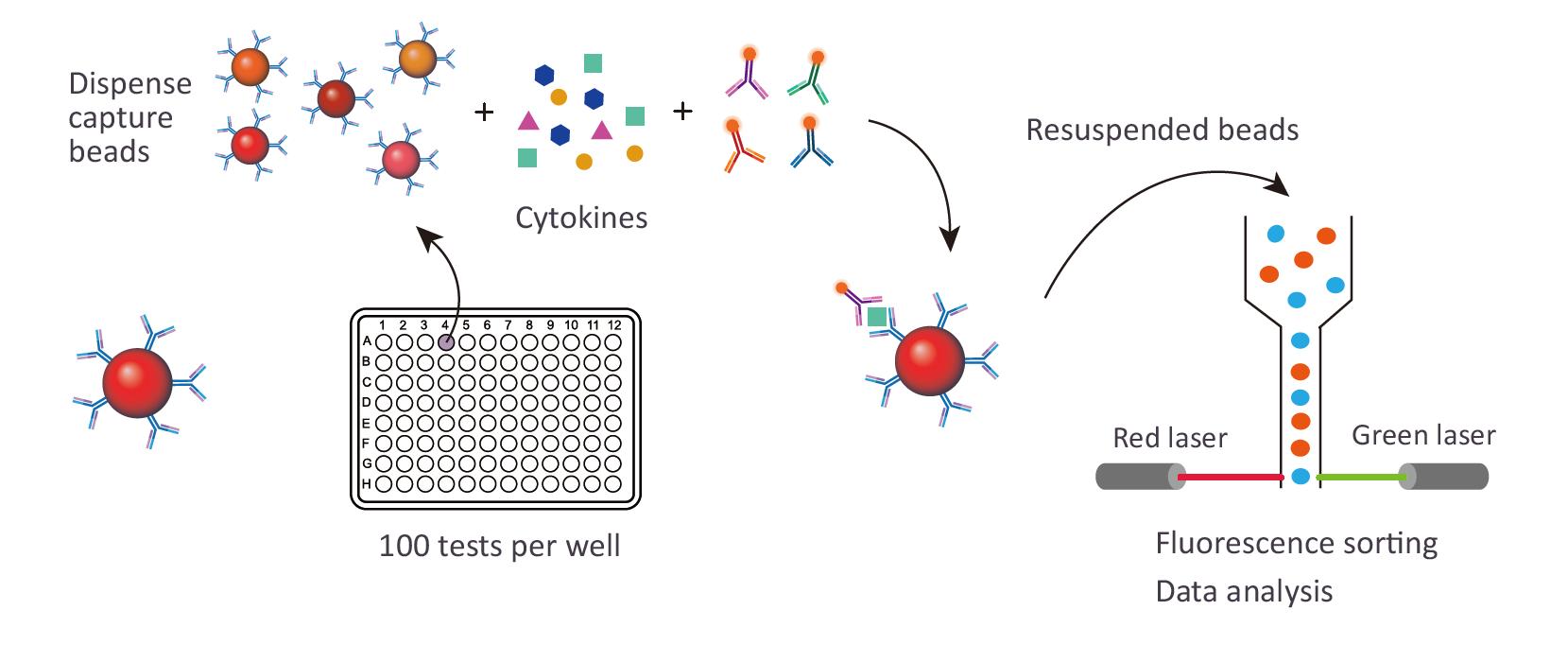Description
Sepsis is an acute systemic infection that occurs when various pathogenic bacteria invade the blood circulation and grow and multiply in the blood, producing toxins. Sepsis may cause imbalance of inflammatory response, abnormal immune function, mitochondrial damage, coagulopathy, abnormal neuroendocrine immune network, endoplasmic reticulum stress, autophagy and other pathophysiological processes that ultimately lead to organ dysfunction.
TNF, IL-1β and IL-6 are cytokines that mediate the initial response of the innate immune system to injury or infection. Both TNF and IL-1β are elevated in sepsis of endotoxin-associated gram-negative infections.
Both PCT and CRP are proteins produced in response to infection and/or inflammation. CRP is a recognized biomarker of infection and inflammation. It is one of the acute phase reactors and the synthesis of these proteins in the liver is upregulated by IL-6. The role of CRP in acute inflammation is not fully understood. It may bind phospholipid components of microorganisms (and damaged host cells), thus facilitating their removal by macrophages. Pentraxin 3 (PTX3) is another protein structurally similar to CRP, which is predominantly produced by inflammatory cells rather than the liver. Elevated PTX3 correlates with the severity of sepsis.
Fc-γ receptor 1 (FcγR1/CD64) belongs to a family of immunoglobulins expressed mainly on macrophages and monocytes and is also a key immunomodulator of the innate and adaptive immune response. FcγR1/ CD64 expression on neutrophils has been reported to correlate with the severity of SIRS and sepsis.
MMPs and tissue inhibitors of metalloproteinases (TIMPs) are key mediators in regulating wound healing after internal injury. The expression levels of MMP-9, TIMP-1 and TIMP-2 are also significantly elevated in sepsis.
Creative Proteomics offers the Luminex Human Sepsis 2-Plex/3-Plex/5-Plex/6-Plex/7-Plex Panels to analyze the levels of sepsis inflammatory factors in different physiological/pathological conditions. Our panels are based on Luminex xMAP technology and are capable of quantifying multiple analytes simultaneously with ideal speed and sensitivity, significantly increasing productivity and saving sample volume.
Detection Method
Magnetic bead-based Luminex multiplex assay
Species
Human
Analytes Detected
| Species | Specification | Protein Targets | Price |
|---|---|---|---|
| Human | Human Sepsis 2-Plex Panel | Elastase-2, Proteinase-3 (PRTN-3) | +Inquiry |
| Human | Human Sepsis 3-plex Panel | FGF-13, MMP-8, Olfactomedin-4 (OLFM-4) | +Inquiry |
| Human | Human Sepsis 5-plex Panel | Lactotransferrin (LTF), Neutrophil Elastase-2 (ELA2), NGA, Resistin, Thrombospondin-1 | +Inquiry |
| Human | Human Sepsis 6-plex Panel | MIF, PAI-1 (tota1), sFas, sFasL/TNFRSF6, sICAM-1, sVCAM-1 | +Inquiry |
| Human | Human Sepsis 7-plex Panel | Granzyme B, HSP70, L-1α, IL-8/CXCL8, MIP-1α/CCL3, MIP-1β/CCL4, MMP-8 | +Inquiry |
Service Features
- 96-well plate design for batch detection of multiplexed factors up to 80 samples
- High sensitivity, as low as pg/mL
- Multi-factor assays performed with 50 μL liquid sample and 200 μg total protein
- Suitable for serum/plasma, culture supernatants, cells, tissue lysates
- Maximized information in a single sample and cross-analysis allowed between analytes
- Run your assay in just 3-5 hours
- Mass-calibrated standards for consistent results with every new lot of material

Suggested Application
- Multiplexed protein assays
- Relative protein expression assays
- Detection of cytokine expression patterns
- Biomarker screening
- Identification of key factors
- Confirmation of biological processes



